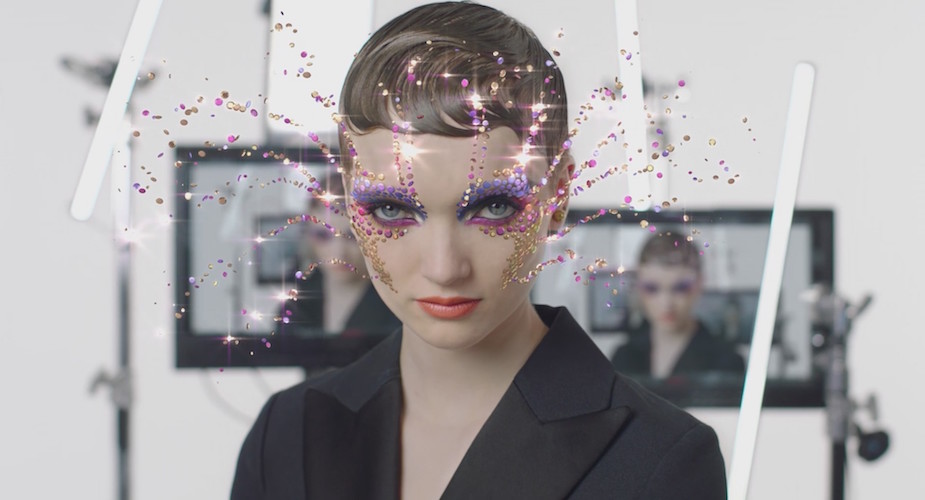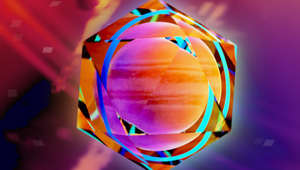
Worlds Without Limits: The Rise of the Immersive Internet

The coronavirus pandemic has given rise to a huge reliance on the internet as a means of communicating, entertaining and getting through what seems like an endless loop of days. But, before unprecedented times, there was always a huge dependence we as humans had on the internet in a world that is increasingly moving more online. It is this, coupled with the recent announcement of 5G connectivity and a greater accessibility to the Internet of Things, that spurred creative agency Cult to dedicate episode two of Cult Futures: The Creatology Report to total tech immersion.
“The concept of the internet as a destination we enter through a laptop, screen or smartphone is becoming obsolete as we enter the world of Total Immersion. It’s an era where houses and cities are invisibly connected, where our environments read us and respond in real-time and where augmented reality becomes a virtual layer collapsing the divide between what is physical and what is virtual. As our online essentially becomes our 'reality' during Covid-19, we’re also on the precipice of huge exploration for what digital products, experiences and online environments look like", said leading futurist and award-winning author Lucie Greene, who co-authored The Creatology Report.
Cult believes that as our lives become more deeply enmeshed in the internet, our interactions with technology will become deeper, blurring the lines between the physical and virtual. All this is giving rise to a culture where humans move comfortably in mixed-format spaces and are as much at ease communicating and hanging out with intelligent machines as with people.
For creativity and marketing, these new forms of technology are shaking things up in a big way. AI and AR are no longer campaign gimmicks and novelties. One only has to look to the red carpet to see how these changes are slowly becoming more mainstream. During the 2020 BAFTA red carpet Richard Malone fused his atelier skills with technological advances to design a 5G-powered AR couture gown for presenter Maya Jama. The dress which was dubbed a ‘world first’ was created from upcycled fabrics fitted with 18 sensors that triggered virtual swathes of fabric to swirl and shapeshift with Jama's movements when viewed through a smartphone.

Cult’s co-founder Bridey Lipscombe believes that as these immersive technologies advance, we should shift our mindset. “[It’s] no longer only about how we interact with technology but how it interacts with us.”
As an agency Cult focuses on the fashion, beauty, lifestyle and luxury markets – areas that tend to have a larger focus on women. At the same time, in the technology world, women are often overlooked both as creators and consumers. To break this stereotype, Cult included a section in this episode’s report dedicated to women in the augmented reality field. One example is digital artist Inès Alpha who creates enchanted versions of reality. At the end of 2019 she collaborated with Dior to create a 3D Instagram filter which enabled users to magically layer onto their faces animated eye shadow and bejewelled make-up looks. While using the filter, the user sees their eyes made up with an almost kaleidoscopic pattern of colourful sequins that appear to emerge from their cheek and brow bones. 3Dior was designed by Peter Philips, Dior Make-up creative and image director, in collaboration with Inès, whose boundary-breaking aesthetic is evident in the final result. Bridey believes that this particular project propelled the beauty world from “from AR-enhanced try on innovation to a playful, creative space for consumers to enjoy”.
These augmented and mixed reality playgrounds are currently most easily accessible via our smartphones, but more fully immersive experiences will become more commonplace as AR and MR headsets become more accessible. Microsoft’s HoloLens 2 was released at the end of 2019, though its price point is still a hefty $3,500. Facebook announced plans to take social media to the next level and is currently working on a LiveMaps initiative with AR glasses to find new ways of connecting. The tech giant hopes to release it in the next three years, and as more players enter the field, the devices should become lighter, less cumbersome and cheaper.
Charlotte Bunyan, head of strategy at Cult adds that it’s not just the tech companies getting involved in the headset market – fashion houses are bringing their own design skills to bear on both the hardware and the experiences. “It’s not just the barrier of a screen or huge headset to experience that new world and engage with it. Luxury brands such as Dior came up with their own, beautiful looking headset. You can create these luxury worlds that reflect these beautiful and luxurious experiences. They’re taking cues form the real world and layering that onto that experience.”

While living in lockdown has given rise to virtual showrooms and ateliers these are all things that the agency believes were always happening. However, like everything this came at a cost and in Charlotte’s opinion excessive virtual reality time drains one’s concentration and can be tiring. Thus she urges brands to “make the tech more seamless, make the experience itself richer, tap into some of the cues and make the experiences feel much less fake.”
What do Cult want brands to take away from their findings in this second episode? Bridey hopes marketeers will think about how blurring of lines between physical and digital opens up limitless opportunities to engage and to tell stories. She adds, “no longer can we consider content creation that has one linear story narrative. We must push ourselves to create truly holistic and unique brand experiences for each consumer.” With the huge popularity of Animal Crossing, Spotify’s collaboration with Magic Leap to create soundscapes for each room of their home and Emilio Pucci’s face filter at fashion week there really is no limit to the worlds of the immersive internet.
The third and final episode of The Creatology Report ‘Super Convergence’ will drop on June 15th
Overview: From e-sports teams that ooze street cred at a lifestyle pop-up to an edgy, shoppable lingerie show on Amazon Prime, platforms are fast blending and overlapping in concentrated, new creative ways, the likes of which we’ve never seen before. Social platforms such as Spotify are becoming entertainers and social networks. User-generated video platforms are becoming akin to e-commerce sites, with payment options baked in. Virtual malls are also games and social networks. And, in the current climate of isolation and social distancing forced on us by Covid-19, online streaming platforms like Zoom and Houseparty are doing double duty as virtual community spaces and settings for brand events, game nights, classes, designer fairs and more. In this hyper-connected digital universe, the merging of social media, e-commerce, music, payments, and entertainment allows us to enjoy more intuitive online engagement, and it also opens the gates wide for creative innovation – especially as digital interactions become more pervasive in every area of life, and emerge as the new normal in the midst of the pandemic. This fusion has already been giving rise to a wave of multi-disciplinary creatives who are merging motion design with sound design, gaming metrics, video and more, buoyed by swift technological advancements in production quality and the ever-expanding imaginations of brand audiences. What does this mean for creativity and brands?










